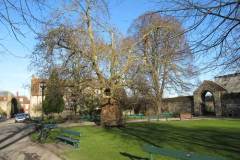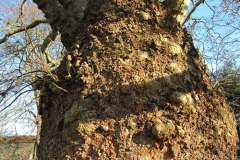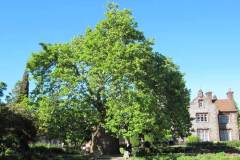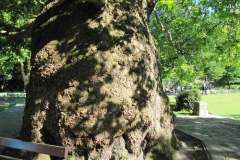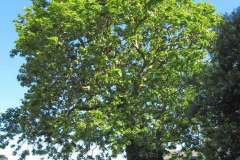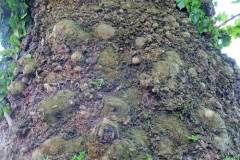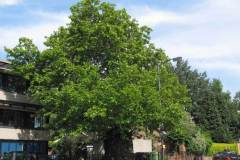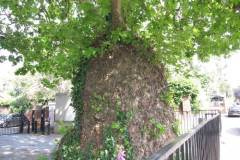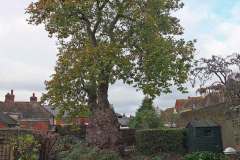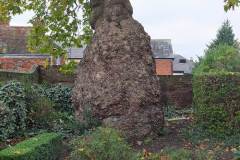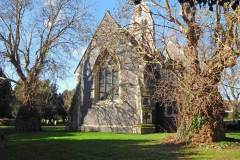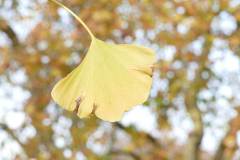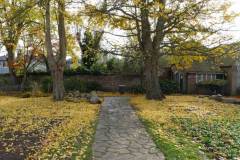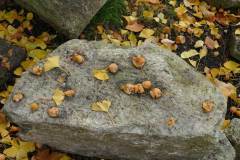We have spotted several impressive examples of Platanus orientalis (Oriental Plane) in the city. They are readily identifiable by the bulbous distortions in the bark of their trunks. These appear at first site to be diseased, but advice from staff at Royal Botanic Gardens, Kew, suggests this is not the case – this is simply the way healthy specimens grow (click on advice button below for details). Our seven can be seen:
- in the precincts not far from the War memorial (Images 1 and 2)
- in Westgate Gardens (Images 3 and 4)
- near Canterbury castle in Gas Street (Images 5 and 6)
- in Old Dover Road not far from Vernon Place (Images 7 and 8)
- at rear of Furley Page solicitors (St Margaret’s Street) (Images 9 and 10)
- two more standing east of St Gregory’s church (now St Gregory’s Music Centre) – our thanks to Sadie Palmer for drawing these to our attention.
Whether these were planted by a single person or came from a single supply source, we will probably never know. What we do know is that the extensive plant catalogues of the Canterbury Victorian nurseryman William Masters included Platanus orientalis, so this at least gives us a likely candidate.
There is plausible evidence that the Westgate gardens tree was once surrounded by a circular metal bench, and that this has, over the years, been subsumed into the growing trunk.
Update February 2014: recent advice from the National History Museum Identification Service concludes that these are a clone of the London Plane (Platanus x hispanica), suffering from a viral infection. The common name is Baobab Plane.
The Masters catalogue also included the remarkable Ginkgo tree. We cannot be sure that he supplied the two examples planted close together in Westgate Gardens, close to the Mayor’s Parlour (Image 13), but it seems plausible. Archaeological evidence shows that the tree has survived essentially unchanged for more than 200 million years. It grew before the age of dinosaurs and witnessed their distinction. And in Westgate Gardens, each November, look out for the Ginkgo fruit (Image 14), with its distinctive aroma of ‘sick and poo’!
Sources: Masters (1831)
Update (March 2020): another example grows in the garden of Meister Omers in the cathedral Precincts; yet another (cut down some years ago but maybe still sprouting new growth) grew near Ersham Road.
DL

